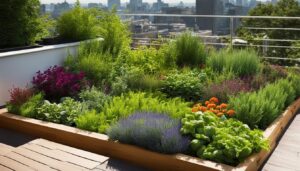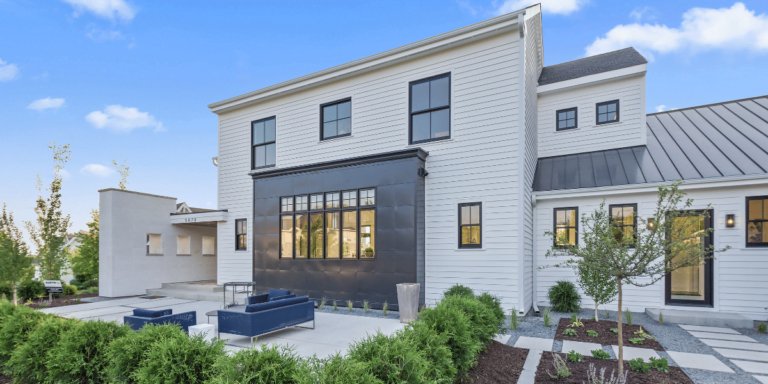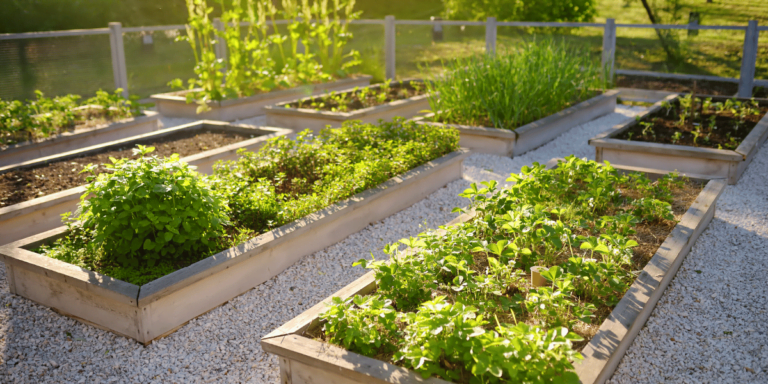In recent years, there has been a growing trend towards incorporating eco-friendly practices into the construction industry. Edible rooftop gardens This includes the integration of edible landscapes, such as rooftop gardens, into construction projects. Edible rooftop gardens not only enhance the aesthetic appeal of spaces but also promote sustainability and self-sufficiency.
By harnessing the power of nature, these gardens provide a unique opportunity to bring the farm-to-table concept to urban areas, allowing individuals to cultivate their own food in the heart of the city. These gardens not only contribute to the sustainability of our planet but also offer a culinary experience like no other. Imagine plucking ripe tomatoes or fragrant herbs straight from the garden to create a delicious, farm-fresh meal.
With edible rooftop gardens, the possibilities are endless. From vibrant vegetables to aromatic herbs, these gardens offer a diverse range of produce that can elevate any culinary creation. Whether you’re a professional chef or a home cook, having access to high-quality ingredients right at your fingertips unlocks a whole new world of flavors and possibilities.
Key Takeaways:
- Edible rooftop gardens combine sustainability and cuisine, offering a unique culinary experience in urban spaces.
- These promote self-sufficiency and reduce the carbon footprint by providing a local source of fresh produce.
- Access to high-quality ingredients right at your fingertips unlocks a world of flavors and possibilities.
- Edible rooftop gardens enhance the aesthetic appeal of spaces and create harmonious environments.
- By embracing eco-friendly practices, the construction industry can contribute to a more sustainable future.
The Benefits of Edible Landscapes
Integrating edible landscapes into construction projects provides numerous benefits. Let’s explore how these landscapes contribute to environmental sustainability, enhance biodiversity, promote water conservation, improve health and well-being, and deliver economic benefits.
| Benefits | Description |
|---|---|
| 1. Environmental Sustainability | Edible landscapes reduce carbon footprints by providing local sources of fresh produce, eliminating the need for long-distance transportation and reducing associated greenhouse gas emissions. |
| 2. Biodiversity | These landscapes attract pollinators, such as bees and butterflies, and beneficial insects, contributing to the overall health of the ecosystem. |
| 3. Water Conservation | By selecting drought-tolerant edible plants and incorporating efficient irrigation systems, water usage can be minimized without compromising productivity. |
| 4. Health and Well-being | Edible landscapes ensure readily available, healthy food options for occupants. They create inviting outdoor spaces, encouraging physical activity and reducing sedentary behaviors. |
| 5. Economic Benefits | Occupants can save significantly on grocery bills by harvesting fresh produce directly from the property. Edible landscapes also add value to properties and appeal to environmentally conscious buyers, potentially increasing market value. |
Implementing edible landscapes in construction projects fosters a harmonious relationship between humans and nature, promoting environmental sustainability, improving well-being, and offering economic advantages.
Key Considerations for Implementing Edible Rooftop Gardens Landscapes

While integrating edible landscapes into construction projects offers numerous benefits, there are key considerations that need to be taken into account. These considerations include site analysis, maintenance and management, as well as education and engagement.
Site Analysis
Site analysis plays a crucial role in the successful implementation of edible landscapes. It involves a detailed evaluation of factors such as sunlight exposure, soil quality, and water availability. By assessing these elements, project managers can determine the most suitable plants and planting strategies for the space. Conducting a thorough site analysis ensures that the edible landscape will thrive and yield a productive harvest.
Maintenance and Management
Proper maintenance and management are essential for the long-term success of edible landscapes. This includes regular watering, fertilizing, pest control, and pruning. Establishing a comprehensive maintenance plan ensures that the plants remain healthy and productive. By dedicating resources and time to maintain the edible landscape, developers can ensure that it continues to provide sustainable benefits for the occupants and the environment.
Education and Engagement
Educating occupants and community members about the benefits and care of edible landscapes is crucial for their sustained success. By organizing workshops or informational sessions, developers can create awareness about the importance of these landscapes and how to maintain them effectively. Encouraging active participation in the maintenance and harvesting process fosters a sense of ownership and pride among the community. This engagement enhances the overall success and impact of the edible landscape project.
| Key Considerations for Implementing Edible Landscapes | |
|---|---|
| Site Analysis | Detailed evaluation of sunlight exposure, soil quality, and water availability |
| Maintenance and Management | Regular watering, fertilizing, pest control, and pruning |
| Education and Engagement | Awareness about benefits and care, community participation |
Notable Examples of Edible Rooftop Gardens Landscapes in Construction Projects

Several remarkable projects have successfully integrated edible landscapes into construction projects, showcasing the potential for sustainable and aesthetically pleasing spaces. Two notable examples are the Bullitt Center in Seattle and One Central Park in Sydney.
Bullitt Center: Recognized as the greenest commercial building in the world, the Bullitt Center features an impressive rooftop garden and orchard. This innovative project harmoniously combines sustainability and cuisine by providing fresh produce to the building’s occupants. The rooftop garden not only enhances the overall beauty of the building but also contributes to its ecological footprint reduction, reflecting its commitment to eco-friendly practices.
One Central Park: Situated in Sydney, Australia, One Central Park stands as a prominent example of edible landscaping in urban construction. With its vertical gardens filled with edible plants, this project is a testament to the fusion of design and functionality. These vibrant green walls not only add visual appeal to the building but also promote a sense of well-being among its residents. The vertical garden concept demonstrates the limitless possibilities of incorporating edible landscapes into urban spaces.
| Project | Location | Description |
|---|---|---|
| Bullitt Center | Seattle | Award-winning commercial building with an impressive rooftop garden and orchard, providing fresh produce to occupants and increasing sustainability. |
| One Central Park | Sydney | A landmark project featuring vertical gardens filled with edible plants, enhancing aesthetics and residents’ well-being. |
Conclusion
Integrating edible rooftop gardens landscapes into construction projects offers a unique opportunity to create harmonious spaces that seamlessly blend sustainability and cuisine. These landscapes not only promote environmental responsibility but also enhance the well-being of communities and provide economic benefits. By embracing this concept, the construction industry takes a step towards creating more self-sufficient and sustainable urban spaces.
Edible landscapes bring numerous advantages, from reducing carbon footprints and conserving water resources to improving the overall health and well-being of occupants. The availability of fresh and nutritious produce right at their fingertips encourages healthier eating habits and outdoor activities.
Beyond these immediate benefits, incorporating edible landscapes into construction projects can have a lasting impact on the communities they serve. It fosters a sense of ownership and pride as occupants actively participate in the maintenance and harvesting process. These landscapes also offer a unique selling point, attracting environmentally conscious buyers and potentially increasing the market value of properties.
As the world grapples with the challenges of urbanization and environmental degradation, edible landscapes provide a promising solution. By merging sustainability, self-sufficiency, and culinary delights, these landscapes create a harmonious balance between human activities and the natural environment. By embracing this innovative approach, the construction industry can lead the way in transforming urban spaces into thriving, sustainable communities.
FAQ
What are the benefits of integrating edible rooftop gardens landscapes into construction projects?
Integrating edible landscapes into construction projects provides numerous benefits, including environmental sustainability, enhanced biodiversity, water conservation, improved health and well-being, and economic advantages.
What environmental benefits do edible landscapes offer?
Edible rooftop garden landscapes help reduce carbon footprints by providing a local source of fresh produce, minimizing the need for transportation and associated greenhouse gas emissions. They also attract pollinators and beneficial insects, contributing to biodiversity and ecosystem health. Selecting drought-tolerant plants and incorporating efficient irrigation systems can minimize water usage without compromising productivity.
How do edible landscapes promote health and well-being?
Edible landscapes ensure readily available healthy food options, improving the overall well-being of occupants. They create inviting spaces for outdoor activities, encouraging healthier lifestyles and reducing sedentary behaviors.
What economic benefits are associated with incorporating edible landscapes?
Incorporating edible landscapes can lead to significant savings on grocery bills for occupants who can harvest fresh produce directly from the property. Edible landscapes also add a unique selling point to properties, attracting environmentally conscious buyers and potentially increasing market value. Surplus produce can be sold or used in various onsite ventures, generating additional income.
What key considerations should be kept in mind when implementing edible landscapes?
Site analysis is crucial, requiring a detailed evaluation of factors like sunlight exposure, soil quality, and water availability to determine suitable plants and planting strategies. Regular maintenance and management, including watering, fertilizing, pest control, and pruning, are also important. Educating occupants and community members about the benefits and care of edible landscapes is essential.
Can you provide notable examples of construction projects with successful edible landscapes?
Yes, the Bullitt Center in Seattle features an impressive rooftop garden and orchard, providing fresh produce to occupants while increasing sustainability. One Central Park in Sydney, Australia, boasts vertical gardens filled with edible plants that contribute to the well-being of its residents.










